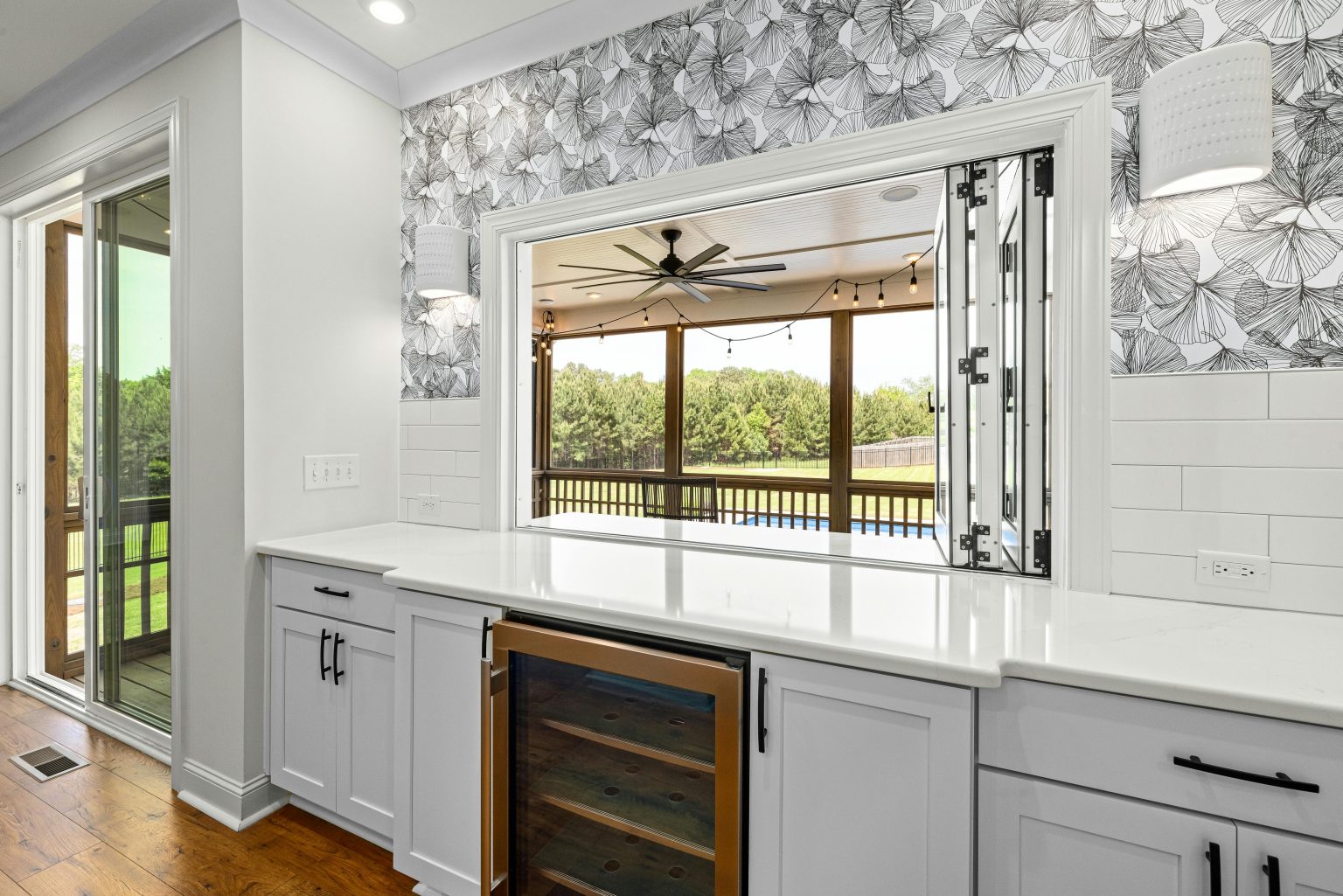Choosing between bi-fold and sliding patio doors can feel like trying to pick between two equally attractive options, each with its own charm and practical strengths. Both can dramatically improve the feel of your home, connect your indoor space to the outdoors, and flood a room with natural light. But they function differently, look different, and suit different needs.
Whether you’re renovating, building from scratch, or just upgrading your patio entry, this comparison will help you get clear on what’s what before you make a costly decision.
What Are Bi-Fold Doors?
Bi-fold doors (also called folding or concertina doors) operate on a track and fold back in sections. When opened, the panels concertina together, stacking neatly to one or both sides. They create a large, seamless opening, ideal for homes that want to blur the lines between inside and out.
You’ll usually see them made from aluminium or uPVC, with full-height glass panels and multiple configuration options. Standard setups range from two to seven panels, depending on the width of the opening and the design.
What Are Sliding Patio Doors?
Sliding patio doors work as you’d expect—they slide sideways along a track. Typically, one panel is fixed while the other slides open. Some systems allow for multiple panels to slide behind one another, especially in wide installations.
Modern versions, especially those with slim frames, are incredibly sleek. They’re all about maximizing glass area and giving you uninterrupted views of your garden, balcony, or terrace.
Aesthetic Differences: Framing and View
Here’s where the two really split.
Bi-Fold Doors: You get full access to the entire width of the opening, but the trade-off is more visible framing. When closed, the multiple door panels create vertical lines across the glass, which can slightly interrupt the view. When open, however, there’s nothing but fresh air.
Sliding Doors: You don’t get 100% access to the opening, usually just 50% to 75%, depending on configuration. But the huge upside is that the glass panels are broader and the frames thinner. When closed, they offer a clean, panoramic view of the outside. For modernists and view lovers, this matters.
Space Requirements: Stack vs Slide
Bi-Folds Need Swing Room: The panels fold inward or outward, so you need to plan for where they’ll stack. In smaller patios or balconies, this can feel tight or awkward if space is limited.
Sliders Stay in Line: Sliding doors don’t take up any additional interior or exterior space when open—they simply glide along their track. That makes them an excellent choice in compact areas or where furniture placement near the door is non-negotiable.
Ventilation and Access Options
Bi-Folds: Open one panel for quick access or fold the entire set for a wide-open feel. Many systems also include a traffic door—a standard door within the set that opens independently for daily use. This adds versatility but does increase cost and complexity.
Sliding Doors: Access is more limited. Usually, only one panel opens unless you’ve chosen a multi-track system. But if your goal is light and visual flow over frequent garden trips, it’s often a fair trade.
Thermal Performance and Energy Efficiency
Both door types are available in energy-efficient models, but they perform slightly differently due to their structure.
Bi-Fold Doors: More moving parts and frames mean more joints and seals—potential weak spots for heat loss. That said, premium systems now feature excellent thermal breaks, insulated frames, and weather-resistant gaskets to help close that gap.
Sliding Doors: With fewer panels and less framing overall, sliding systems often edge out in efficiency. Fewer seals and more uninterrupted glass can make it easier to maintain consistent indoor temperatures.
Security Features
Security depends heavily on the manufacturer and materials, but here’s the baseline:
Bi-Folds: They generally include multi-point locking systems, reinforced tracks, and toughened glass. Some also offer internal beading and shoot-bolt mechanisms, making them hard to tamper with.
Sliding Doors: Security here has improved massively. Anti-lift devices, secure locks, and laminated or tempered glazing are standard in modern builds. As long as the door can’t be lifted off its track, and it locks securely, you’re covered.
Maintenance and Longevity
Bi-Fold Doors: Because they have more hinges and moving parts, they can require more maintenance over time. Tracks must be kept clean, hinges oiled, and seals checked. Aluminium versions tend to last longer and resist warping or swelling.
Sliding Doors: Fewer parts equal less wear. Keep the track clear and the rollers clean, and they should glide smoothly for years. Slim-frame aluminium systems are especially low maintenance, and they don’t suffer from weather-related issues like wood or older uPVC systems might.
Price Comparison
Cost depends on size, material, brand, and glazing options, but here’s a general guide:
- Bi-Fold Doors: Usually more expensive than sliders due to the complexity of the system. More panels, more hardware, more installation time.
- Sliding Doors: Generally more cost-effective, especially for wide openings. Plus, large glass panels mean fewer frames and hinges to deal with.
If you’re on a tight budget but still want something modern, clean, and functional, Aluminium Slimline Sliding Patio Doors can give you the aesthetic and performance without going overboard on cost.
Best Situations for Each Door Type
Choose Bi-Fold If:
- You want a fully open wall to the garden
- Hosting and indoor-outdoor living are high priorities
- You have ample space for stacking panels
- You want a “wow” factor
Choose Sliding Doors If:
- You prioritise views and natural light
- You’re working with limited space
- You want lower maintenance and fewer mechanical parts
- You’re after a more minimal, modern look
Final Thoughts on Design Preference
This is where personal style weighs in.
Bi-folds lean traditional-contemporary. They’re popular in extensions, period homes with a modern twist, and garden rooms.
Sliding doors are pure modern. Clean lines, open sightlines, and a more architectural feel. They’re perfect for new builds, apartments, and homeowners who want subtle sophistication.
And if you’re specifically chasing sleek, high-performance results, Aluminium Slimline Sliding Patio Doors offer one of the best finishes on the market today. Their narrow sightlines and robust build give you both the aesthetic and the practical advantage, without cluttering up your space.



